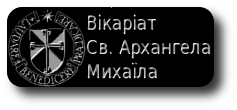
Spanish Priest-Martyr a Model of Forgiveness
16-01-2010
BARCELONA, Spain, JAN. 15, 2010 (Zenit.org).- The Vatican officially announced today that a Spanish priest and martyr, Josep Samsó i Elias, will be beatified in the town where he was a parish priest.
Bishops of his nation have pointed to the priest as a model of forgiveness that is particularly needed today in Spain.
"The forgiveness with which he died asks us to be always -- and especially in the present circumstances of our country -- promoters of that spirit of forgiveness and reconciliation which has always characterized the best followers of Jesus Christ," the prelates of the region of Barcelona wrote in a statement marking the beatification.
Mataro, Spain, the final parish where Father Samsó ministered, will be the site of the beatification. Cardinal Angelo Amato, prefect of the Congregation for Saints' Causes, will lead the celebrations.
The bishops of the Barcelona province affirmed: Father Samsó's beatification "is above all a spiritual event and we are all called to live it as a thanksgiving to God, and as an invitation to imitate today his virtues, the apostolate, and the witness of faith -- taken to the point of martyrdom -- that this holy priest has left us."
Good student
Josep Samsó i Elias was born in the Barcelona town of Castellbisbal on Jan. 17, 1887.
He studied in the seminary of Barcelona, becoming known for exemplary conduct and great dedication to his studies.
Because of this, his superiors asked him to study theology in the Pontifical University of Tarragona.
In 1909, while still a seminarian, he was named the private secretary of Bishop Juan José Laguarda of Barcelona.
Samsó was ordained a priest on March 12, 1910, and carried out his ministry in several parishes, the last of which was St. Mary of Mataro, where he will be beatified.
He was a model priest, totally dedicated to his ministry as pastor. And the bishops noted how he was "severe with himself, by temperament and virtue, but understanding with others and gifted with qualities of governance to rule the communities entrusted to him."
Best catechesis in Spain
Father Samsó dedicated himself to the ministry of charity and catechesis.
His best-known work was a guide for catechists, prepared as early as March 1936, but not published until 1940.
Bishop Manuel Irurita, bishop of Barcelona from 1930 to 1936, expressed on various occasions that Father Samsó was "the first catechist of the diocese."
Bishop Daniel Llorente, who would lead the Diocese of Segovia from 1944 to 1969, and was a well-known catechist, said that "Samso had in his parish of St. Mary of Mataro the best organized catechism in the whole of Spain."
Besides teaching, Father Samsó also dedicated himself to spiritual direction, helping many youth to find and follow a priestly or consecrated vocation.
As well, he insisted on punctuality in the schedule of Masses, sought perfection in liturgical ceremonies to attain the greatest splendor of worship, and he worked intensely in the interior decoration of the church of St. Mary, which in 1928 was distinguished with the title Minor Basilica.
Threats
In October of 1934, a group of armed men entered St. Mary's rectory, threatened Father Samsó and the people who were there, and ordered them to go to the central nave and pile up the chairs to be burned. Father Samsó refused, despite the threats, and the attackers set fire to an altar and other items.
Father Samsó affirmed his forgiveness of the attackers and did not want to reveal their identity when he was asked to do so by the authorities.
But from that day until his arrest in 1936, the priest often repeated that a bloody persecution was approaching. The danger for him as a priest and rector led him to accept generously the possibility of martyrdom, with an attitude of hope.
Forgiveness
Indeed, Father Samsó was imprisoned in 1936 because he was a priest. He did not let his incarceration halt his prayer, however, following a strict schedule that enabled him to read his breviary, meditate and organize moments to pray the rosary in a way that the guards did not catch on.
He also heard the confession of some of those detained, becoming a catechist and apostle for all, always affable and encouraging, and sharing with prisoners the things that visitors brought him.
His captivity ended with his death Sept. 1, 1936.
The morning of his execution, he took leave of his fellow prisoners with his usual "God above all" and, with his hands bound, was taken to the cemetery of Mataro.
After going up the steps, he asked to be unbound and wished to embrace those who were going to kill him.
He told them that he forgave them as Jesus forgave those who nailed him to the cross.
When they tried to cover his eyes, he asked that they not, so he could die looking at the city of the faithful whom he so loved.
Father Samsó offered his life to Christ with serenity and died with words of forgiveness for his executioners.
http://www.zenit.org/article-28063?l=english














